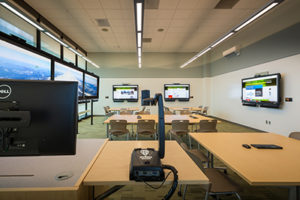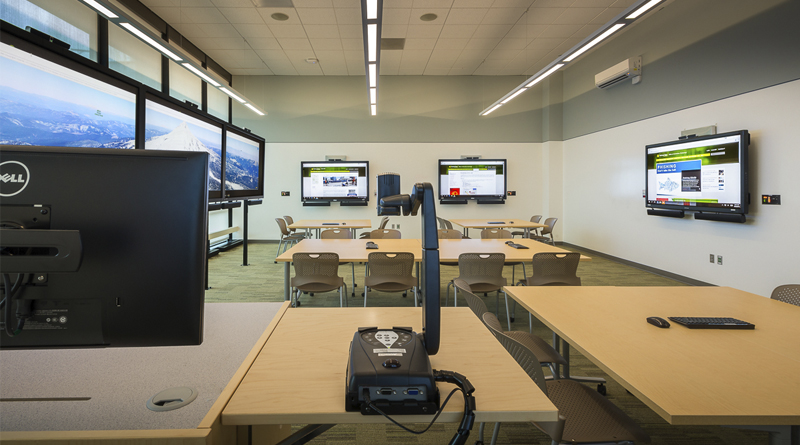Making Makerspaces Work in Higher Education
By Brady O. Bruce
Coding camps and makerspaces are the new trend to get young students interested in new tech or science subjects, and to engage them in interactive learning. But this method shouldn’t end after middle school; it can be applied easily to higher education to benefit students, researchers, professors and even sports administrators.
These spaces make “making” happen in a different way, in which students do less tinkering and more collaborating. At the higher level, it becomes difficult for students to work together on the same document or project, so how do they collaborate on one document at once? Many students may look to document sharing platforms like Dropbox or Google Drive, but this method just lets multiple people type at once.

Photo Credit: Courtesy of InFocus
Many university makerspaces are stocked with tools such as 3-D printers, laser cutters, CNC (Computer Numeric Control) machines, hand tools and welding equipment where participants can innovate, design, prototype and build everything from practical devices to art. On campuses from Stanford to the University of Texas at Austin to North Carolina State University, students use these studios to create tangible portfolio pieces to satisfy course requirements in engineering, architecture, design and art classes. But for those who can’t tinker with physical objects, some makerspaces embrace virtual participation using videoconferencing for input and inspiration from remote experts.
Portland State University envisioned a place for local government and private companies to work alongside their researchers on a variety of projects that link data sets, visualization, and decisions. The university created a Decision Theater to accelerate research and learning in areas such as forest fire prediction and prevention — where large-scale data visualization permits people to see patterns they otherwise could not predict or determine — and also to create a community resource available to host local businesses such as architecture firms, or other regional stakeholders such as first-responders. University leaders created a 360-degree, large-scale view with InFocus Mondopads along four walls, and a collaboration and video conferencing interactive board. The room lets large and small groups form to work side-by-side and chat with researchers, professors and other students in collaborating programs.
Some universities saw the potential of this technology and applied it to their athletics department. Collaboration technologies are being deployed in football programs to improve everything from training and game management to competitive analysis and sports broadcasting; Digital video and enhanced collaboration tools allow coaching and analyst staff, who are often in multiple locations during a game, to immediately review plays together on the screen, create or revise play calling in real-time, annotate directly on top video streams and archive video for later analysis.
NCAA college football is experimenting with collaborative replay review for more accurate officiating and response to call challenges. In a high-stakes 12-game season where every call and yard count, the potential for increased officiating accuracy is game-changing. Video and off-site collaboration are used similarly to the Decision Theater, where possible targeting fouls are reviewed by an onsite official in a remote video command center, using instant replay and real-time communication technologies. For officials as well as for players and coaches, it is critical that everyone is seeing the same thing and that confident, well-informed rulings are made quickly. Developing a common operating picture and collaborating efficiently are essential requirements for the technology.
The rapid evolution of collaboration technologies is changing the college experience on the gridiron and in the classroom. The library and the lab are becoming dynamic and deeply engaging resources that drive innovation and entrepreneurship, linking students across the campus and around the world.
Brady O. Bruce is chief marketing officer for InFocus, headquartered in Portland, Ore.

